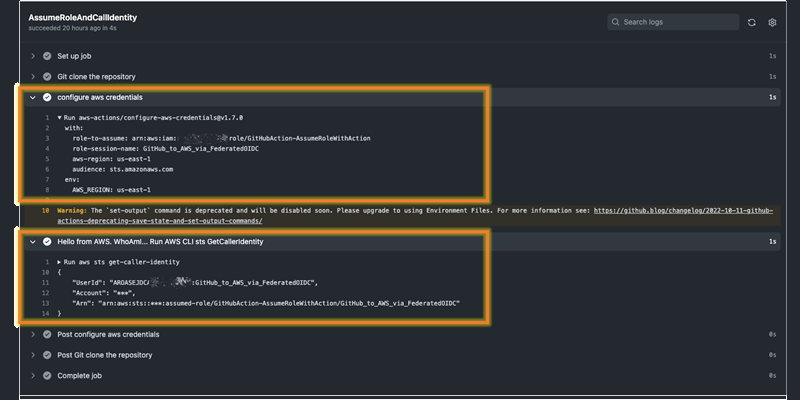AWS Security Blog
Category: Best Practices
A walk through AWS Verified Access policies
AWS Verified Access helps improve your organization’s security posture by using security trust providers to grant access to applications. This service grants access to applications only when the user’s identity and the user’s device meet configured security requirements. In this blog post, we will provide an overview of trust providers and policies, then walk through […]
Detect threats to your data stored in RDS databases by using GuardDuty
With Amazon Relational Database Service (Amazon RDS), you can set up, operate, and scale a relational database in the AWS Cloud. Amazon RDS provides cost-efficient, resizable capacity for an industry-standard relational database and manages common database administration tasks. If you use Amazon RDS for your workloads, you can now use Amazon GuardDuty RDS Protection to […]
Get details on security finding changes with the new Finding History feature in Security Hub
In today’s evolving security threat landscape, security teams increasingly require tools to detect and track security findings to protect their organizations’ assets. One objective of cloud security posture management is to identify and address security findings in a timely and effective manner. AWS Security Hub aggregates, organizes, and prioritizes security alerts and findings from various […]
Protect your Amazon Cognito user pool with AWS WAF
September 8, 2023: It’s important to know that if you activate user sign-up in your user pool, anyone on the internet can sign up for an account and sign in to your apps. Don’t enable self-registration in your user pool unless you want to open your app to allow users to sign up. Many of […]
Use IAM roles to connect GitHub Actions to actions in AWS
May 22, 2023: We updated the post to reflect case sensitivity in the IDP entered: https://token.actions.githubusercontent.com. The IDP created in this post should be entered in lowercase through the post. Have you ever wanted to initiate change in an Amazon Web Services (AWS) account after you update a GitHub repository, or deploy updates in an […]
Scaling security and compliance
At Amazon Web Services (AWS), we move fast and continually iterate to meet the evolving needs of our customers. We design services that can help our customers meet even the most stringent security and compliance requirements. Additionally, our service teams work closely with our AWS Security Guardians program to coordinate security efforts and to maintain […]
Scale your authorization needs for Secrets Manager using ABAC with IAM Identity Center
With AWS Secrets Manager, you can securely store, manage, retrieve, and rotate the secrets required for your applications and services running on AWS. A secret can be a password, API key, OAuth token, or other type of credential used for authentication purposes. You can control access to secrets in Secrets Manager by using AWS Identity […]
TLS inspection configuration for encrypted traffic and AWS Network Firewall
AWS Network Firewall is a managed service that provides a convenient way to deploy essential network protections for your virtual private clouds (VPCs). In this blog, we are going to cover how to leverage the TLS inspection configuration with AWS Network Firewall and perform Deep Packet Inspection for encrypted traffic. We shall also discuss key […]
Logging strategies for security incident response
Effective security incident response depends on adequate logging, as described in the AWS Security Incident Response Guide. If you have the proper logs and the ability to query them, you can respond more rapidly and effectively to security events. If a security event occurs, you can use various log sources to validate what occurred and […]
Automate the deployment of an NGINX web service using Amazon ECS with TLS offload in CloudHSM
Customers who require private keys for their TLS certificates to be stored in FIPS 140-2 Level 3 certified hardware security modules (HSMs) can use AWS CloudHSM to store their keys for websites hosted in the cloud. In this blog post, we will show you how to automate the deployment of a web application using NGINX […]









